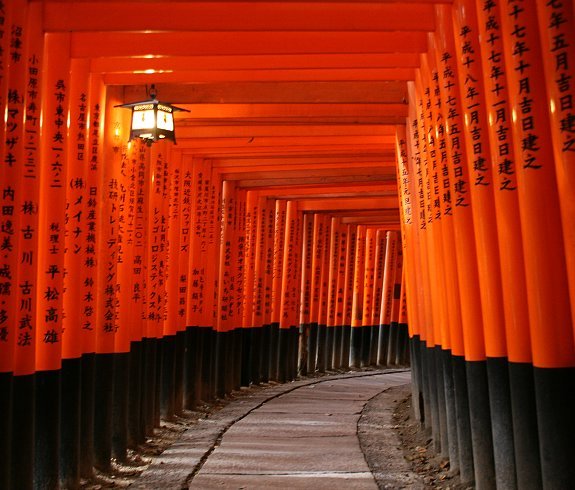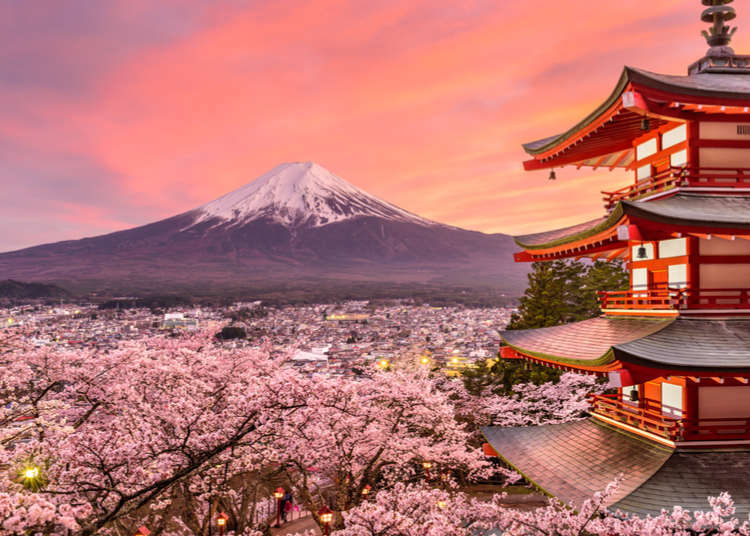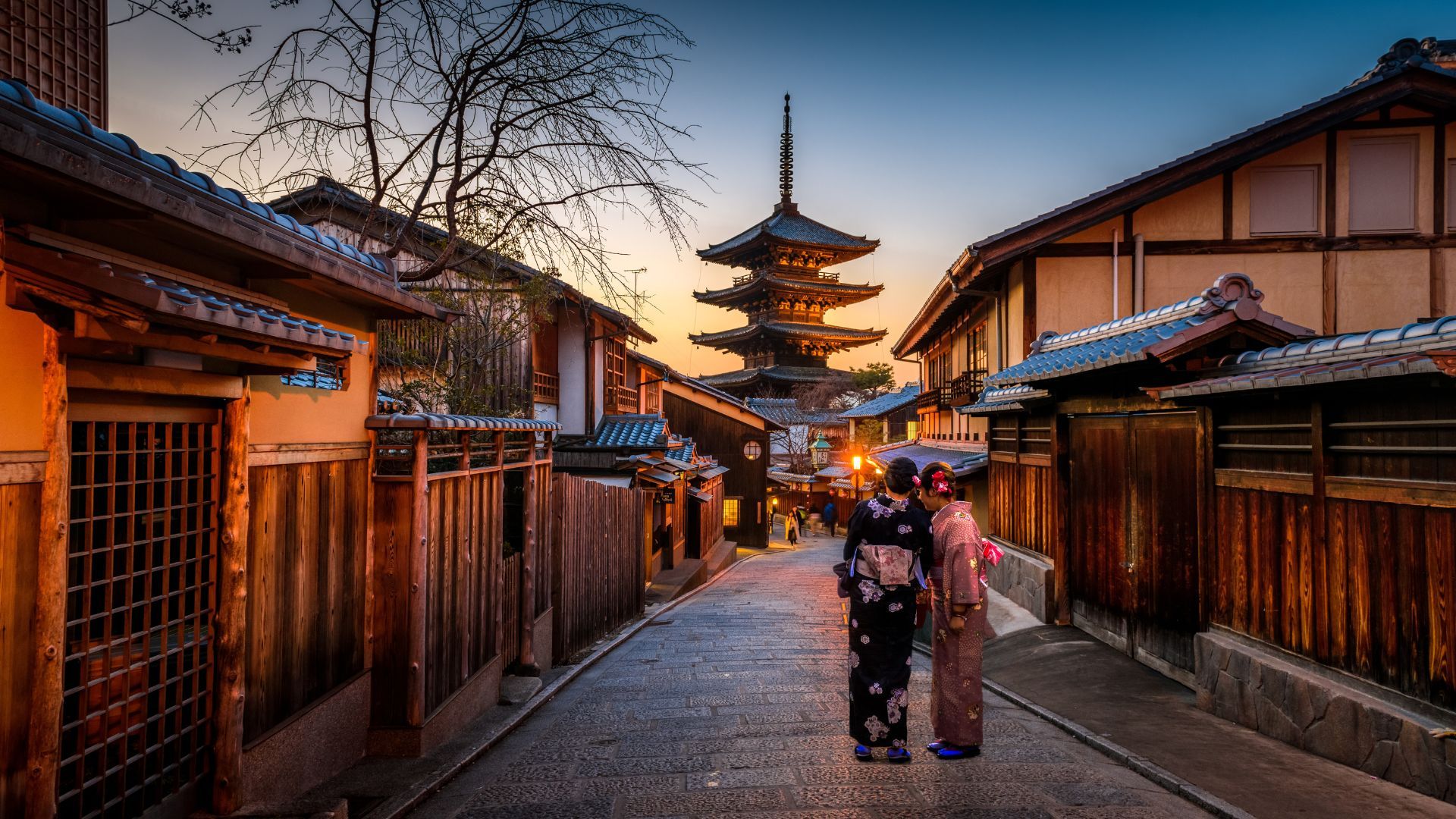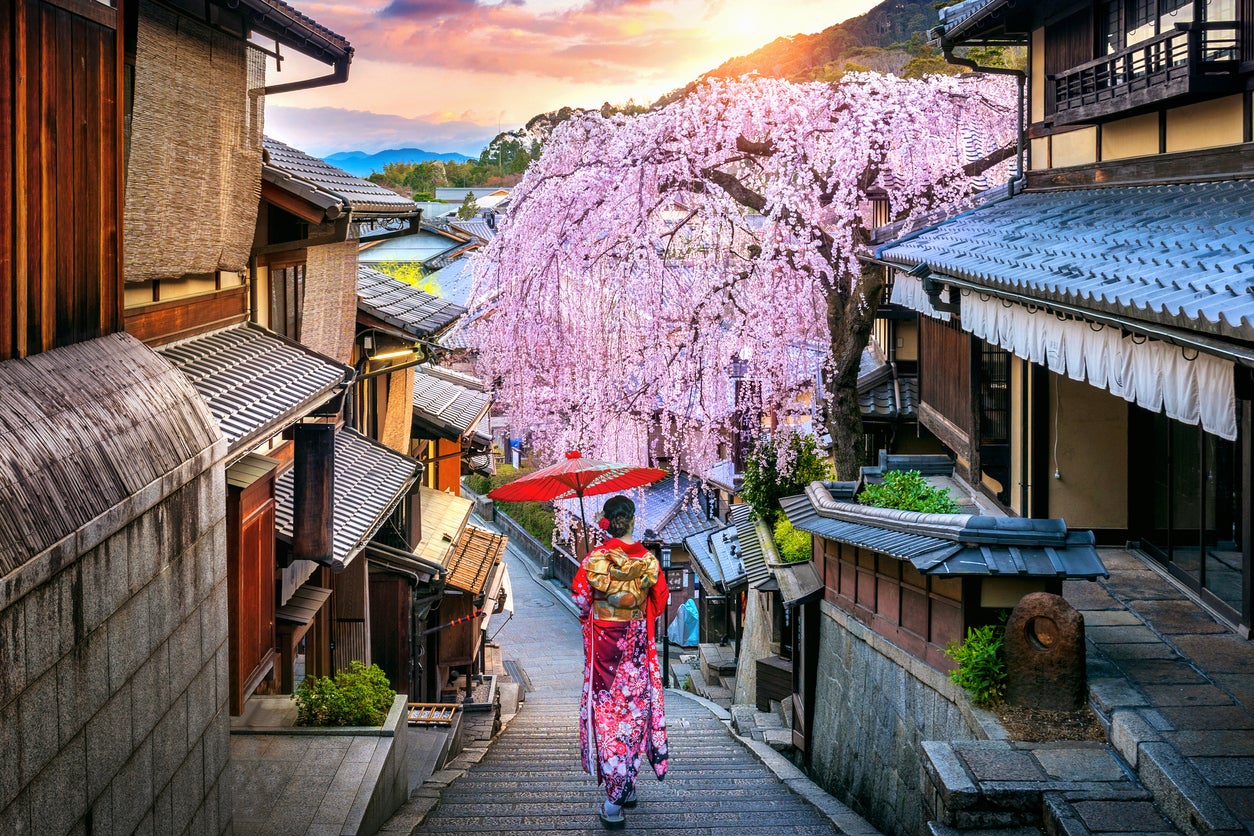When planning your upcoming adventure, knowing the essential details can make all the difference. Japan travel offers a unique experience filled with cultural richness and stunning landscapes. However, to fully enjoy your trip, understanding travel documents, visa requirements, and the best time to visit is crucial. Additionally, being familiar with packing essentials and cultural etiquette will enhance your journey. As you prepare to explore Japan’s vibrant cities and tranquil countryside, keep these vital considerations in mind to ensure a smooth and unforgettable experience.
Win a Free Trip to Japan!
Experience cherry blossoms and ancient temples
Travel Documents and Visa Requirements
When planning your Japan travel, understanding the necessary travel documents and visa requirements is crucial for a smooth experience. Here’s what you need to keep in mind:
Passport Requirements
- Validity: Your passport must be valid for at least six months beyond your planned return date.
- Condition: Ensure your passport is in good condition; damaged pages might lead to entry denial.
Visa Requirements
Travelers from various countries require different visa types. Here’s a quick comparison to guide you:
| Country | Visa Required | Length of Stay |
|---|---|---|
| USA | No | Up to 90 days |
| Canada | No | Up to 90 days |
| UK | No | Up to 90 days |
| Australia | No | Up to 90 days |
| India | Yes | Varies |
Other Essentials
- Return Ticket: Always book a return or onward ticket; it may be requested upon entry.
- Accommodation Confirmation: Proof of accommodation reservations can expedite your entry process.
- Travel Insurance: While not a requirement, having travel insurance is advisable for unexpected situations.
By ensuring you have the correct travel documents before your Japan travel, you can focus on enjoying your adventure without any unwanted surprises. Prepare ahead to make your trip as enjoyable as possible!

Best Time to Visit Japan
When planning your Japan Travel, choosing the right time to go can significantly enhance your experience. Japan features four distinct seasons, each offering unique scenery and cultural events. Here’s a quick guide to help you decide:
- Spring (March to May): Famous for cherry blossoms, this is one of the most popular times to visit. The weather is mild, and you’ll find vibrant festivals celebrating Hanami (flower viewing).
- Summer (June to August): Expect warm temperatures, especially in cities like Tokyo and Kyoto. Summer also brings vibrant festivals and fireworks. However, prepare for humidity and occasional typhoons.
- Autumn (September to November): This season showcases stunning autumn foliage, particularly in November. The weather is generally pleasant, making it ideal for sightseeing and outdoor activities.
- Winter (December to February): Experience Japan’s winter wonderland! Popular for skiing and snowboarding, regions like Hokkaido become winter sports hotspots. Plus, you can enjoy serene hot springs or “onsen” amidst the snow.
Comparison of Seasons for Japan Travel
| Season | Highlights | Weather | Best Activities |
|---|---|---|---|
| Spring | Cherry blossoms, festivals | Mild, moderate | Hanami picnics |
| Summer | Vibrant festivals, fireworks | Hot, humid | Outdoor activities |
| Autumn | Stunning fall colors | Cool, pleasant | Hiking, sightseeing |
| Winter | Skiing, snow activities | Cold, snowy | Onsen, winter sports |
Choosing the right time for your Japan Travel can transform your adventure, ensuring that you take in all the beauty and culture this fascinating country has to offer.
Essential Packing List
Planning your Japan Travel adventure requires careful consideration of what to pack. The unique climate and culture necessitate a thoughtful approach to ensure you have everything you need. Here’s an essential packing list to get you started:
Clothing
- Layers: Japan experiences diverse weather, so pack lightweight layers.
- Comfortable Shoes: Expect a lot of walking; comfortable, supportive shoes are a must.
- Cultural Attire: Consider bringing a kimono or yukata for traditional experiences.
Toiletries
- Essentials: Include travel-size toiletries like toothpaste, deodorant, and shampoo.
- Medications: Bring any personal medications along with a copy of your prescriptions.
Electronics
- Universal Adapter: Japan uses type A and B plugs; an adapter is essential.
- Portable Charger: Keep your devices charged while exploring.
Travel Documents
- Passport: Ensure it is current and carries necessary visas.
- Copies: Make photocopies of your passport and important documents.
Miscellaneous
- Phrasebook: A guide to basic Japanese phrases can greatly enhance your experience.
- Reusable Bag: Handy for shopping as many stores charge for plastic bags.
With this essential packing list, you’re prepared for a successful Japan Travel experience. Remember, traveling light can make exploration easier and more enjoyable!
Cultural Etiquette and Customs
When planning your Japan Travel, understanding cultural etiquette and customs is crucial for a respectful and enjoyable experience. Here are key points to keep in mind:
- Bowing: A common greeting in Japan is bowing. The depth and duration of the bow vary depending on the situation and the relationship between the individuals.
- Shoes Off Indoors: Always remove your shoes when entering someone’s home or certain traditional accommodations—like ryokans. Look for designated slippers for guests.
-
Dining Etiquette:
- Chopsticks: Avoid sticking chopsticks upright in rice, as it resembles funeral customs. Never pass food using chopsticks.
- Slurping: It’s considered polite to slurp noodles, showing appreciation for the meal.
-
Gifts and Gratitude:
- When giving or receiving gifts, use both hands. It’s customary to express thanks—saying "Arigato" is appreciated.
- Queuing: Japanese society values order. Always line up patiently for trains, buses, and even at shops.
- Public Behavior: Keep conversation volumes low in public spaces, and avoid talking on the phone. Respect personal space and maintain a calm demeanor.
Understanding these customs enhances your Japan Travel experience. Embracing local etiquette enriches interactions and fosters goodwill with residents, leaving a lasting impression from your journey.

Transportation Options in Japan
When planning your Japan travel, understanding the transportation options is crucial for navigating the country efficiently. Japan boasts a world-class transportation system that is both punctual and convenient. Here are some key options to consider:
1. Trains
- Shinkansen (Bullet Train): Fast, comfortable, and a must-experience! Connects major cities.
- Local Trains: Excellent for short distances, with frequent services throughout the day.
2. Subways and City Trains
- Major Cities: Tokyo, Osaka, and Kyoto have extensive subway systems.
- Affordability: Subways typically offer discounted day passes for unlimited travel.
3. Buses
- Long-Distance Buses: Cost-effective for travel between cities, often dubbed as "Highway Buses."
- Local Buses: Provide access to areas not serviced by trains.
4. Taxis
- Availability: Widely available in urban areas, although fares can add up.
- Language: Drivers may not speak English, so it’s helpful to have your destination written in Japanese.
5. Bicycles
- Cycling Culture: Many cities have rental services, making biking a fun way to explore.
- Environmentally Friendly: Enhances your travel experience while contributing to sustainability.
Comparison of Transport Options
| Transport Mode | Speed | Cost | Best For |
|---|---|---|---|
| Shinkansen | Very Fast | High | Long-distance travel |
| Local Trains | Moderate | Moderate | City navigation |
| Buses | Variable | Low | Budget travel |
| Taxis | Moderate | High | Convenience |
| Bicycles | Slow | Low | Local exploration |
When considering your Japan travel, factor in time, budget, and personal comfort to choose the best option for your adventure.
Language Tips for Travelers
Navigating language barriers can enhance your Japan Travel experience. While Japanese is the official language, many locals in urban areas understand basic English. However, brushing up on some language tips can make your trip smoother.
Key Phrases to Know
- Konnichiwa (こんにちは) – Hello
- Arigatou Gozaimasu (ありがとうございます) – Thank you
- Sumimasen (すみません) – Excuse me / I’m sorry
- Eigo o hanasemasu ka? (英語を話せますか?) – Do you speak English?
- Wakarimasen (わかりません) – I don’t understand
Helpful Tips
- Learn Basic Characters: Familiarize yourself with Hiragana and Katakana. It helps in reading signs and menus.
- Use Translation Apps: Consider downloading a translation app. Tools like Google Translate can bridge communication gaps.
- Carry a Phrasebook: Keep a small phrasebook handy for quick references. It’s effective in emergencies or when technology fails.
Respect Cultural Context
- Politeness is Key: Be courteous when asking for help; locals appreciate genuine respect.
- Non-Verbal Communication: Utilize gestures and body language if words fail. Often, a smile goes a long way.
Enhancing your linguistic skills not only enriches your Japan Travel experience but also fosters connections with locals, making your adventures even more memorable.
Must-Try Japanese Cuisine
When embarking on your Japan Travel adventure, one of the culinary highlights you can’t miss is the diverse and delicious Japanese cuisine. Here are the must-try dishes that will tantalize your palate:
Top Japanese Dishes to Experience
-
Sushi and Sashimi
Fresh fish served with rice, sushi is iconic, while sashimi offers delicate slices of raw fish. Don’t forget to try regional variations! -
Ramen
This comforting noodle soup comes in several styles, including Shoyu (soy sauce), Miso, and Tonkotsu (pork bone). Each variation boasts unique flavors. -
Tempura
Lightly battered and deep-fried seafood or vegetables, tempura is a must-try dish, often served with a dipping sauce. -
Okonomiyaki
A savory pancake made with a variety of ingredients, including cabbage, meat, and seafood. Often cooked on a teppan, it’s a personal favorite among locals. -
Kaiseki
An exquisite multi-course meal highlighting seasonal ingredients, perfect for experiencing Japan’s culinary artistry.
Dessert Delights
-
Mochi
A glutinous rice cake often filled with sweetened bean paste or ice cream. Its chewy texture makes it a unique treat. -
Matcha
This finely ground green tea powder features prominently in Japanese sweets and drinks, offering a rich taste that’s hard to resist.
Enjoying these dishes will not only enhance your Japan Travel experience but also immerse you in the local culture. Bon appétit!

Popular Destinations to Explore
When planning your Japan travel, it’s essential to know which destinations should top your itinerary. Each location offers unique experiences that reflect Japan’s rich culture, history, and stunning landscapes. Here are some must-visit destinations to include:
- Tokyo: A bustling metropolis where modernity meets tradition. Visit iconic sites like the Tokyo Tower, Meiji Shrine, and cross the famous Shibuya Crossing.
- Kyoto: Renowned for its ancient temples, beautiful gardens, and traditional tea houses. Don’t miss the enchanting Arashiyama Bamboo Grove and the Kinkaku-ji (Golden Pavilion).
- Osaka: Known for its vibrant street life and delicious street food, such as takoyaki and okonomiyaki. Explore Universal Studios Japan or visit Osaka Castle for a bit of history.
- Hiroshima: A city that symbolizes peace and resilience. Visit the Hiroshima Peace Memorial Park and Museum, and take a ferry to the beautiful Miyajima Island.
- Nara: Home to Japan’s first capital and renowned for its friendly deer roaming Nara Park, as well as the impressive Todai-ji Temple.
Comparison Table of Destinations:
| Destination | Highlights | Travel Duration from Tokyo |
|---|---|---|
| Tokyo | Modern attractions, shopping | 0 hours (base point) |
| Kyoto | Temples, gardens | 2.5 hours |
| Osaka | Food scene, entertainment | 3 hours |
| Hiroshima | Peace Memorial, natural beauty | 4 hours |
| Nara | Nature, historical sites | 1 hour |
With these destinations in mind, your Japan travel experience will be filled with unforgettable moments, catering to all interests and preferences.
Safety Tips for Traveling in Japan
When planning your Japan travel adventure, safety is a priority. Fortunately, Japan is one of the safest countries in the world, with low crime rates and a welcoming atmosphere. Here are some key safety tips to enhance your experience:
- Stay Informed: Keep abreast of local news and updates, especially regarding natural disasters like earthquakes or typhoons.
-
Emergency Numbers: Familiarize yourself with emergency contacts:
- Police: 110
- Ambulance and Fire: 119
- Health Precautions: Always carry a small first aid kit and any personal medications. Japan has excellent healthcare, but having essentials handy is prudent.
Important Safety Practices
- Respect Local Customs: Engage with Japanese etiquette, such as removing shoes indoors and following queue lines. This shows respect and can prevent misunderstandings.
- Public Transport Vigilance: While Japan’s transportation system is safe, remain aware of your surroundings during peak hours. Keep valuables secure and be cautious in crowded places.
Overall Travel Safety
- Keep Copies of Documents: Make photocopies of your passport and travel documents. Store these separately from the originals.
- Stay Connected: Consider renting a pocket Wi-Fi device to ensure constant access to maps and emergency contacts during your Japan travel experience.
In conclusion, by following these safety tips, you can focus on enjoying the vibrant culture and breathtaking landscapes that await you in Japan!
Local Currency and Payment Methods
When planning your Japan travel, understanding the local currency and available payment methods is crucial for a seamless experience. Here’s what you need to know:
Currency Overview
- Yen (JPY) is the official currency.
- Banknotes come in denominations of 1,000, 2,000, 5,000, and 10,000 yen.
- Coins are available in 1, 5, 10, 50, 100, and 500 yen.
Payment Methods
In Japan, a variety of payment options exist:
| Payment Method | Pros | Cons |
|---|---|---|
| Cash | – Widely accepted everywhere | – Can be cumbersome |
| – No transaction fees | – Need to carry enough cash | |
| Credit/Debit Card | – Convenient and easy for larger purchases | – Some places don’t accept it |
| – Track your spending easily | ||
| IC Cards | – Can be used for trains, buses, and shops | – Requires initial purchase |
| – Reloadable and convenient | – Limited usage in rural areas |
Tips for Managing Currency
- ATM access: Use international ATMs, particularly at convenience stores like 7-Eleven, to withdraw cash.
- Currency exchange: Exchange money at airports or banks for better rates.
- Notify your bank before traveling to avoid card issues during your Japan travel.
With the right knowledge of currency and payment methods, your trip to Japan will be more enjoyable and stress-free.
Frequently Asked Questions
What are the essential documents I need to carry when traveling to Japan?
When traveling to Japan, it’s crucial to have a few essential documents on hand. You will need a valid passport that should have at least six months of validity beyond your intended stay. Depending on your nationality, a visa may also be required. It’s wise to have a printed copy of your travel itinerary, accommodation bookings, and travel insurance details. Additionally, keep a photocopy of your passport for emergency purposes.
What currency should I use while in Japan?
In Japan, the official currency is the Japanese Yen (JPY). It’s advisable to carry some cash, as many smaller establishments like traditional restaurants, local shops, and public transportation systems may not accept credit cards. You can exchange your currency for Yen at airports, banks, or designated currency exchange offices. ATMs are also widely available, but ensure they accept international cards, as not all Japanese ATMs do.
What are some cultural norms I should be aware of while in Japan?
Japan has a rich cultural heritage, and being mindful of local customs is essential. For instance, it’s customary to bow as a greeting rather than shaking hands. It’s also important to remove your shoes when entering someone’s home or certain traditional inns, known as ryokans. Public displays of affection are generally frowned upon, and speaking loudly on public transport should be avoided. Observing these norms will help you show respect towards the local culture.
What is the best way to communicate in Japan if I don’t speak Japanese?
While Japanese is the national language, many people in larger cities speak some English. It’s advised to learn basic Japanese phrases, as this can go a long way in enhancing your travel experience. You can use translation apps on your phone to bridge communication gaps. Additionally, carry a phrasebook or download offline guides that may assist you in understanding signs, menus, and other essential information while navigating through the country.
Is Japan a safe country for travelers?
Japan is considered one of the safest countries for travelers. The crime rate is very low, and the local population is generally friendly and helpful to tourists. However, as with any travel destination, it’s advisable to stay vigilant and take common-sense precautions, such as safeguarding your belongings and being aware of your surroundings. Additionally, familiarize yourself with basic emergency contacts and procedures should any unforeseen circumstances arise.
